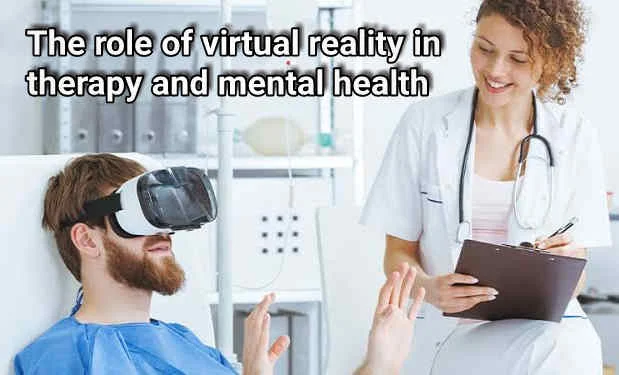Virtual Reality Therapy: A New Frontier in Mental Health
Virtual reality (VR) technology is becoming increasingly popular in the field of mental health, as it offers a number of benefits over traditional therapy methods. In this article, we will explore the ways in which VR is being used in therapy and mental health, and the potential benefits of this technology.
One of the most significant ways in which VR is being used in therapy is through the use of exposure therapy. This type of therapy is used to help people overcome phobias, post-traumatic stress disorder (PTSD), and other anxiety disorders. In VR exposure therapy, patients are immersed in virtual environments that simulate the situations they fear. This allows them to confront their fears in a controlled and safe environment, which can help them to overcome them.
VR is also being used to treat other mental health conditions such as depression and psychosis. It can be used to create virtual environments that simulate different scenarios, such as a peaceful beach or a park, which can help patients to relax and improve their mood. Additionally, VR can be used to create virtual activities, such as playing games or socializing with virtual characters, which can help to improve social skills and reduce feelings of isolation.
"VR technology" is also being used to improve mental health in other areas, such as addiction recovery. In this case, VR can simulate environments and situations that are associated with the addiction, allowing patients to practice coping strategies and avoid triggers in a safe and controlled environment.
Moreover, VR technology also has the potential to improve access to therapy and mental health services. It can be used to provide therapy remotely, which can be especially beneficial for people living in remote areas or for those who are unable to leave their homes due to mobility issues. Additionally, VR can be used to provide therapy in a more cost-effective and efficient manner, which can help to reduce waiting lists and improve access to care.
What is virtual reality and how did it develop?
Virtual reality (VR) is a technology that allows users to interact with and experience a computer-generated environment as if it were real. VR technology typically includes a headset or other display device, which is worn by the user, and a set of sensors and other devices that track the user's movements and actions.
The concept of virtual reality has been around for decades, with early attempts at creating VR dating back to the 1960s. However, the technology was not yet advanced enough to make these early attempts practical or widely available.
In the 1980s, advancements in computer technology, particularly in the areas of graphics and display technology, began to make VR a more viable possibility. The first commercial VR systems were introduced, including the Virtuality arcade system and the PowerGlove controller for the Nintendo Entertainment System.
In the 1990s, further advancements in computer technology, particularly in the areas of graphics and display technology, led to the development of more advanced VR systems. These systems were used primarily in research and development, rather than for commercial or consumer use.
In recent years, VR technology has become more accessible and affordable, thanks to the widespread availability of smartphones, which can be used as the display device for VR systems. Additionally, the development of new VR technologies, such as the Oculus Rift, HTC Vive, and PlayStation VR, has made it easier for consumers to experience virtual reality in their homes.
In conclusion, VR technology is being used in a variety of ways in the field of therapy and mental health. It offers a number of benefits over traditional therapy methods, such as the ability to simulate real-world situations in a controlled and safe environment. Additionally, VR technology can help to improve access to therapy and mental health services, which can be especially beneficial for people living in remote areas or for those who are unable to leave their homes. While research is still ongoing, the results so far suggest that VR technology can be a valuable tool in the treatment of a wide range of mental health conditions.

